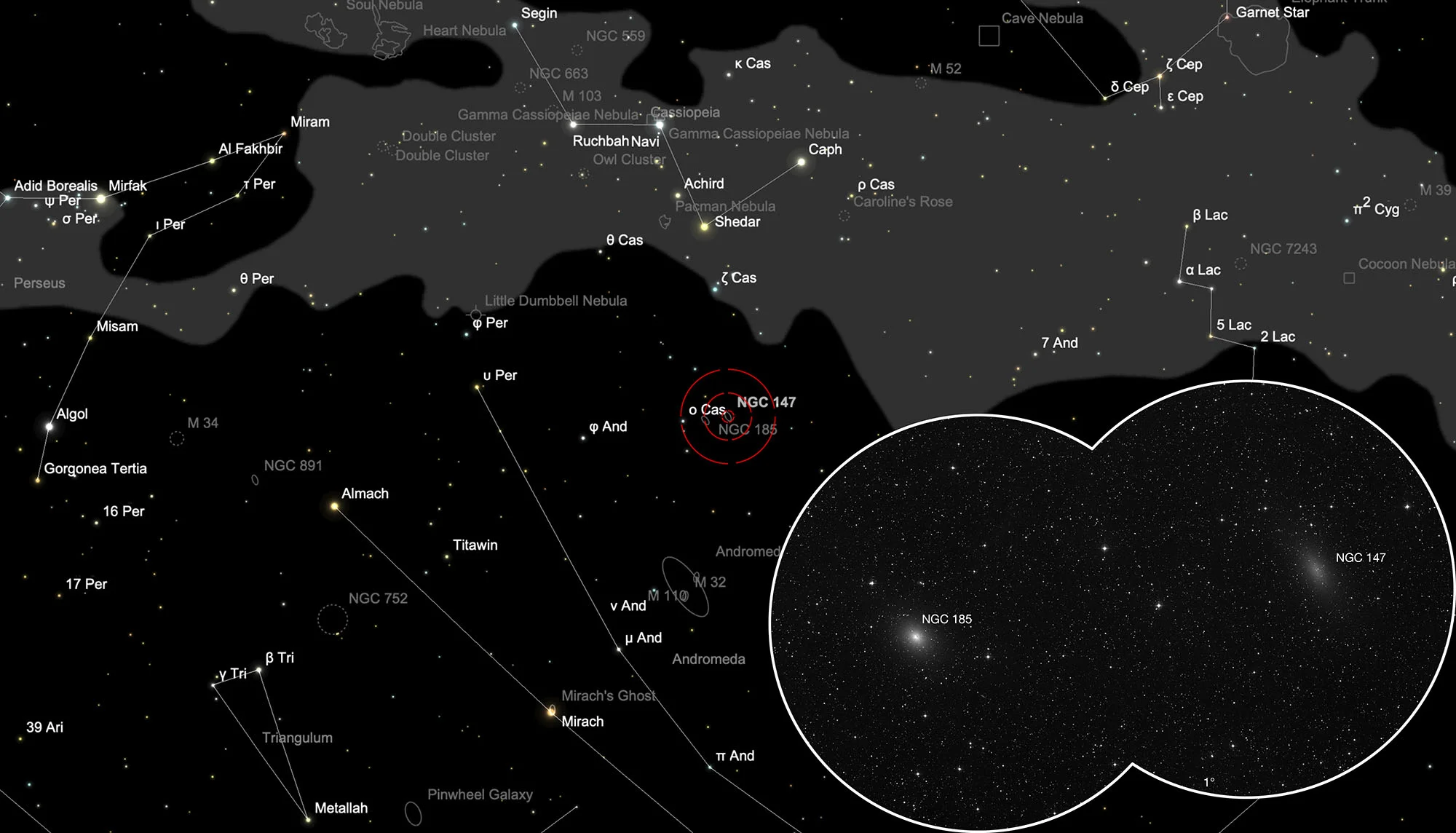Galaxies NGC 147, NGC 185


History
On 30 November 1787 William Herschel discovered a nebula which he cataloged as II 707 (class II = faint nebulae) and described as follows: «pretty bright, very large, irregular round, very gradually much brighter in the middle, resolvable, 5 or 6 diameter» [464] On 8 September 1829 his son John discovered another nebula which he cataloged as h 29. He noted: «very faint, very large, irregular round, 4..5' diameter, loses itself insensibly, has a star 11 mag in centre.» [466] Willian Herschels discovery was added by J. L. E. Dreyer as NGC 185 and the one of his son as NGC 147. [313]
Physical Properties
Both galaxies are elliptical dwarf galaxies and companians of the Andromeda Galaxy (M 31), which is roughly 7° (≈ 90 kpc) away. The brighter one is NGC 185, which shows very active star formation and dust near its centre. NGC 147 and NGC 185 are gravitationally bound to each other. Distance of NGC 147 ranges from 708 to 730 kpc. NGC 185 is slightly closer with distances ranging from 630 kpc to 700 kpc. The angular separation between NGC 147 and NGC 185 is about 58 arc minutes, which gives a true distance of 12 kpc. [145]
| Name | RA | Dec | Type | bMag | vMag | B-V | SB | Dim | PA | z | MD | Dreyer Description | Identification, Remarks |
|---|---|---|---|---|---|---|---|---|---|---|---|---|---|
| NGC 147 | 00 33 11.7 | +48 30 26 | Gx (E5/P) | 10.5 | 9.5 | 1.0 | 14.5 | 13.2 × 7.8 | 25 | -0.000644 | 0.730 | vF, vL, iR, gsmbM * 11 | h 29; GC 72; UGC 326; MCG 8-2-5; DDO 3; CGCG 550-6 |
| NGC 185 | 00 38 57.6 | +48 20 14 | Gx (E3) | 10.1 | 9.2 | 0.9 | 14.4 | 8 × 7 | 35 | -0.000674 | 0.670 | pB, vL, iR, vgmbM, r | WH II 707; h 35; GC 90; UGC 396; MCG 8-2-10; CGCG 550-9; IRAS 00362+4803 |
Finder Chart
The galaxies NGC 147 and NGC 185 are located in the outskirts of the constellation Cassiopeia. Best observing time is in the months June to February, when this circumpolar constellation is highest in the sky.
